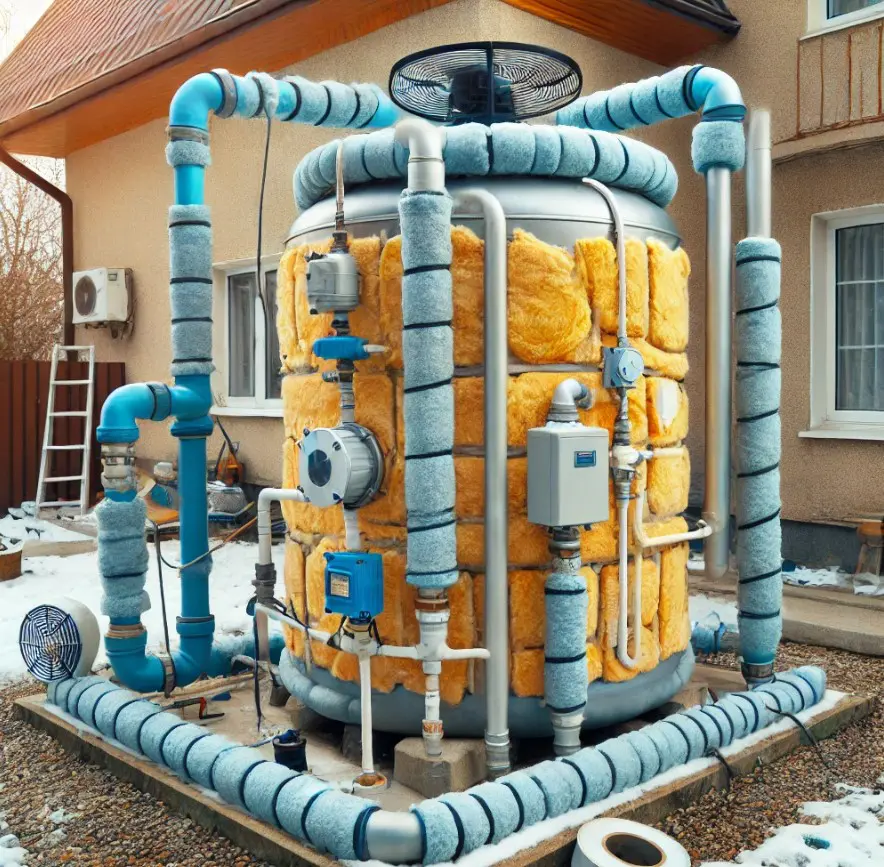How to Winterize Your Water Well System in a Cold Environment

It’s winter. Cooler air, snow, maybe ice.
But for you it is even more important. For anyone who lives by a water well, winter can be especially challenging.
Unless you’re prepared, you risk putting a hole in your system. Iced pipes and pumps are also costly to fix. Now let’s get into winterizing your water well.
Why Winterization Matters
Imagine waking up in January. You open the tap, and nothing spills. Water you drink, cook, and wash with is gone. Your life is shattered by a freeze-dried well.
Winterizing your water well is more than a chore. You need to. If done properly, it can save you a lot of heartache and stress. Don’t wait another winter to do so. Now setup your system.
Insulate Your Well Pump and Pipes!
How do you start? Blankets. It is your secret weapon in the winter. Open pipes and pumps are at risk from freezing.
First look at any visible parts. Examine the well pump, the piping and the plumbing. When exposed, they are protected.
You can go for foam insulation. Put it around your pipes, and it does wonders. For above ground pumps, you can consider an insulated well pump cover. If you’re ambitious, make an insulated box.
Remember, a piece as small as a quarter could spell disaster. Leave no slack. You don’t want anyone sabotaging your well.
Turn Off Outside Water
Then outdoor faucets. They’re hard to see, and they’re big headaches.
If it is still too cold to be outside this year, shut off outdoor spigots. Once you’ve done that, turn on the taps. Let any water fall away.
You are lucky if your faucets do not freeze. These faucets keep water from freezing and are an extra layer of protection in case you forget to winterize. But don’t count on just them. If in doubt, beware.
Extend and Break Off All Hoses
And now consider hoses. They’re one of the most prevalent winter damage sources.
Verify your garden hoses. If you leave them connected, they hold water. When the temperatures cool, that water freezes. What happened? Cracked pipe, or a ruined pump.
Shut down all hoses and run them cold. : Put them inside if possible. You will save yourself some trouble by doing this.
Have irrigation lines hooked up to your well? If not, then they are too. Drain them the minute the temperature starts to drop. Drains are especially susceptible to frost. Be prepared for winter.
Install a Well House Heater (If Desired)
You may also require extra protection if you live in an extreme cold region.
You could make a life-changing move by installing a well house heater. This is what keeps your pump warm so that it doesn’t freeze.
Choose a heater that includes an integrated thermostat. So that it turns on by default when it gets cold.
Always be safe. Please be sure that the heater is not in flames and safe for rooms inside.
Insulate the Pressure Tank
Also an important part of your water well system is your pressure tank.
Don’t ignore it! Cover your pressure tank and surrounding pipes with insulation. These parts are easily prone to extreme cold, especially if they are placed in unheated locations.
Tape the pipe with foam pipe insulation or heat tape. This will ensure that a consistent amount of water will flow throughout the winter.
Plan Regular Maintenance
Get professional inspections before the winter is in full swing. And good service technicians can identify problems before they become a problem.
They’ll look for leaking and weakness in parts. It is this sort of prevention that can save you significant money down the road. And they can winterize your system well.
Takeaway
Here’s a summary of the key steps.
- Insulate Your Pump and Pipes: Isolate any exposed areas.
- Switch Off Outdoor Water: Turn off and run outdoor faucets.
- Stretch and Break All Hoses: Disconnect and drained outdoor hoses and hoses.
- Get a Well House Heater: If your pump needs to be warmed, make sure that it is.
- Seal the Pressure Tank: Insulate your pressure tank and pipes.
- Schedule On-Time Maintenance: Get an inspection by a professional.
The earlier your water well system is winterized, the earlier the damage. Don’t wait for the first snow or the first frost. Be prepared.
You can ensure your well system lasts all winter with proper preparation. These precautions not only secure your investment, but also give you confidence.
Final Thoughts
When you winterize your water well system, you won’t have to worry about anything during the cold months. Consider drinking hot cocoa by the fire, knowing that you have safe water to drink. You’ll have more time to go out enjoying winter activities instead of trying to repair it.